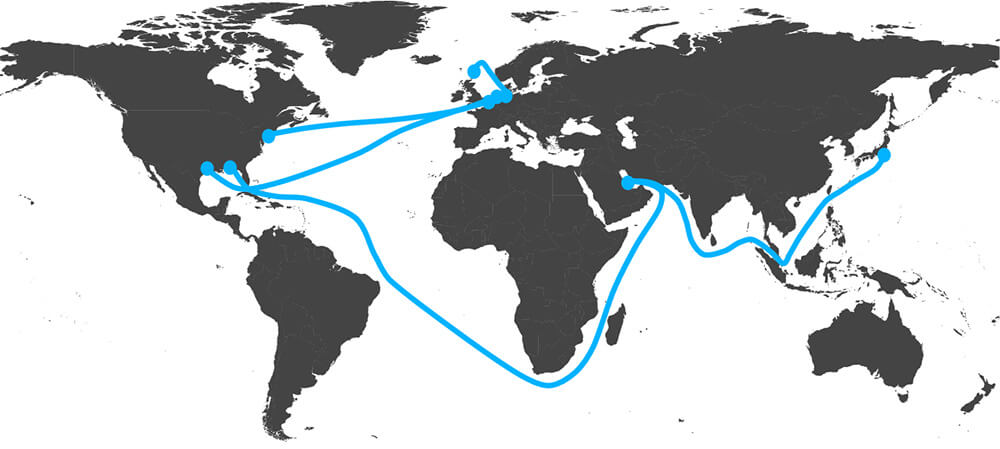The world’s major maritime oil shipping routes
Date:2023-11-16
Waterborne oil shipping routes connect the world’s major oil-producing and consuming regions. There are transoceanic international routes, and there are short-distance oil shipping routes within a region or a certain country. Since the production and consumption areas of crude oil are relatively concentrated, judging from the basic flow direction of water-based crude oil transportation. There are only four major international crude oil routes. The following introduces the main routes of world maritime oil transportation.
As we all know, the world’s major crude oil producing areas are basically concentrated in the Middle East Gulf, North Africa, West Africa, the North Sea, Siberia-Central Asia, China and surrounding areas, the Malay region, the South American Caribbean and North America. Judging from the shipping volume of crude oil exported by each region, the order from large to small is: Middle East Gulf, North Africa, West Africa, Caribbean, Near East and Southeast Asia. The countries and regions that need to import crude oil are mainly concentrated in Northwest Europe, the United States and Japan.Therefore, the four main oil shipping routes in the world are:

(1) Persian Gulf-Western Europe and North America route: It is the main oil supply route in the oil consumption areas of Western Europe and North America. The highest annual transportation volume was as high as 600 million tons. This route is usually transported by super tankers, and due to water depth restrictions, super tankers have sailed through the Mozambique Strait and then around the Cape of Good Hope since setting sail from the Persian Gulf.
(2) Persian Gulf-Japan route: It is Japan’s main oil supply route, with an annual transportation volume of more than 100 million tons. When using VL-CC oil tankers for transportation, it is necessary to detour through the Lombok Strait and Makassar Strait. If it is transported by oil tankers within 200,000 tons, it can be transported to Japan through the Strait of Malacca, and the voyage is shorter than the former.
(3) Persian Gulf-Western Europe route: It is mainly a route that supplies oil to Western Europe. Some crude oil is also transported to North America. The main difference from the above-mentioned Persian Gulf-Western Europe and North America routes is that it passes through the Sui-Turkish Canal and the Mediterranean Sea. The Strait of Gibraltar reaches Western Europe and North America without detouring through the Cape of Good Hope, and is transported by oil tankers within 150,000 tons.
(4) Mexico-Japan route: It is another major fuel supply route to Japan. One is to cross the Pacific Ocean to Japan via the Panama Canal. The size of the oil tanker used is limited by the size of the Panama Canal, usually below 60,000 tons. The second is to set sail from the west coast of Mexico and arrive in Japan along the North Pacific.
In addition, there are some short-distance maritime oil shipping routes as follows: West Africa-North America and South America route; North Africa-Western Europe route; Black Sea-Mediterranean route; Persian Gulf-Australia and New Zealand route; Alaska-East Coast of the United States Routes; Gulf of Mexico-Caribbean route; Southeast Asia, China-Japan route, etc.
Next: United States tender of replacement of rubber fenders and bollards
RELATED
- High-Performance Pneumatic Fenders Ready for STS Operation
- What affects the performance of ship launching airbags?
- A batch of DD Fenders Successfully delivered to Europe
- New batch of cylindrical fenders were delivered in advance
- What kind of rubber fenders are used on tugboats?
- Malta – supply and installation of D-shaped rubber fenders
- D0.6m ship launching airbags were successfully delivery
- What are the methods of salvaging shipwrecks?

